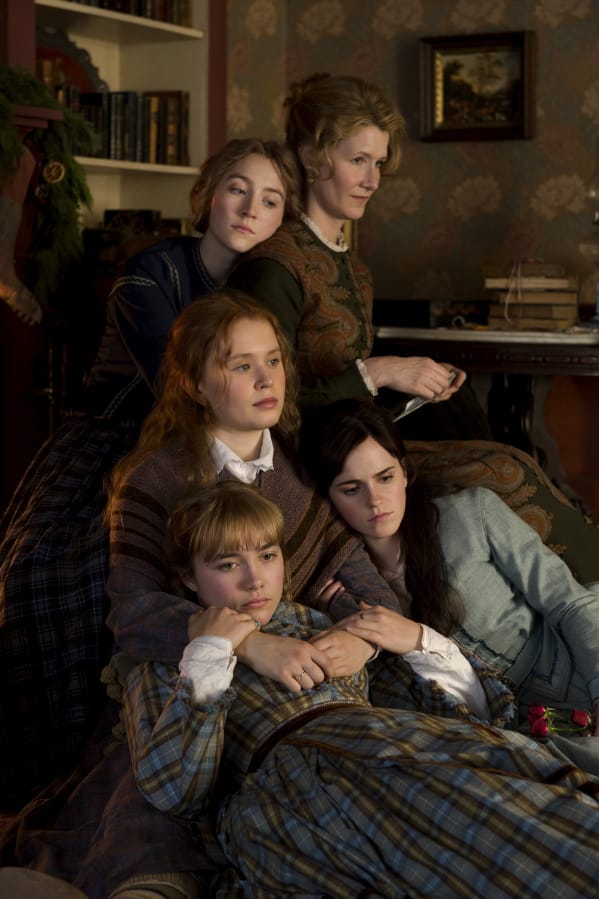Note: This story does not include spoilers specific to the 2019 film version of “Little Women” directed by Greta Gerwig. It does include spoilers about “Little Women” the book by Louisa May Alcott, which we have all had 150 years to read.
•••
Above all else, Louisa May Alcott was a radical. From an early age, she was an abolitionist. She was also a feminist, committed to never marrying, and loved to pull up her skirts and go for a long run through the woods.
Alcott’s most famous work, “Little Women,” was nearly the opposite — a light, juvenile novel focused on sisterly love and domestic peace. And though it was semi-autobiographical, she hated it. The latest film version, directed by Greta Gerwig, hit theaters Christmas Day.
Alcott’s father, Bronson Alcott, with whom she was close, was also a radical. He hung out with Transcendentalist poets and used the family home as a stop on the Underground Railroad. He was also a teacher who was disgraced after publishing a book with ideas about education that were a little too innovative.
And he was prone to depression. Once he was fired from his school, he didn’t work again for years. An attempt to start a utopian community failed utterly, deepening his depression, and his wife and daughters were forced to take any work they could to keep the family afloat.
Alcott took on sewing projects, worked as a maid to a rich woman on a trip to Europe, and tried to sell stories she had written to women’s magazines. She also worked as a Civil War nurse, and her written account of this period turned into her first literary success.
But her favorite things to write were suspense novels, which she published under the name A.M. Bernard. These stories featured liberated women following sensational passions across the high seas and in glamorous locales. She wrote dozens of these stories for women’s magazines but earned only a pittance.
Then she dipped her toes into children’s stories, where the market was bigger and the pay slightly better. An editor friend who worked at a publishing house, Thomas Niles, urged her to write a “simple” novel about girls. She tried, but found it boring and gave up.
Soon afterward, according to Humanities magazine, her father went to the same editor with a manuscript of his philosophical musings. Niles agreed to publish it on the condition that his daughter try again to write a novel about girls.
In May 1968, she wrote in her journal, “Mr. N wants a girls’ story, and I begin ‘Little Women.’ … I plod away, though I don’t enjoy this sort of thing. Never liked girls or knew many, except my sisters; but our queer plays and experiences may prove interesting, though I doubt it.”
Alcott plowed through writing the book in two months. Halfway through, she delivered 12 chapters to Niles, confiding in her journal, “He thought it dull; so do I.”
But their tunes changed after Niles gave it to some young girls as a test audience; they told him it was “splendid.” “As it is for them, they are the best critics, so I should be satisfied,” Alcott wrote in her journal. She also noted that the publisher advised her to retain the copyright, a decision that would soon make her a fortune.
Released that September, the book was a hit. Alcott was an overnight literary star. Though she was grateful to finally have financial stability, she was never comfortable with the public acclaim she got from writing something about which she cared little. When adoring fans would knock on the door of her home, she would pretend to be a servant and usher them away.
What we now know as the novel “Little Women” was released as two volumes; when the first book covering the March sisters’ childhood did well, fans demanded a second volume so they could find out what happened to the sisters as adults.
And there was one particular request she resented deeply; young girls really, really wanted Jo to marry her neighbor friend Laurie.
“Girls write to ask who the little women marry, as if that was the only end and aim of a woman’s life,” she complained in her journal. “I won’t marry Jo to Laurie to please any one.”
Just like the other characters in “Little Women,” there had been a real-life Laurie to Alcott’s Jo. His name was Laddie, and he was a Polish man 10 years her junior with whom she had carried on a flirtation during a trip to Europe. In the end though, Alcott chose to stick with her vow of “spinsterhood” — a decision her fans seemed to unintentionally condemn.
So, she wrote to a friend, “out of perversity” she “made a funny match” for Jo in the sequel: not Laurie, but old German Professor Bhaer. It was a literary decision that breaks hearts to this day.



